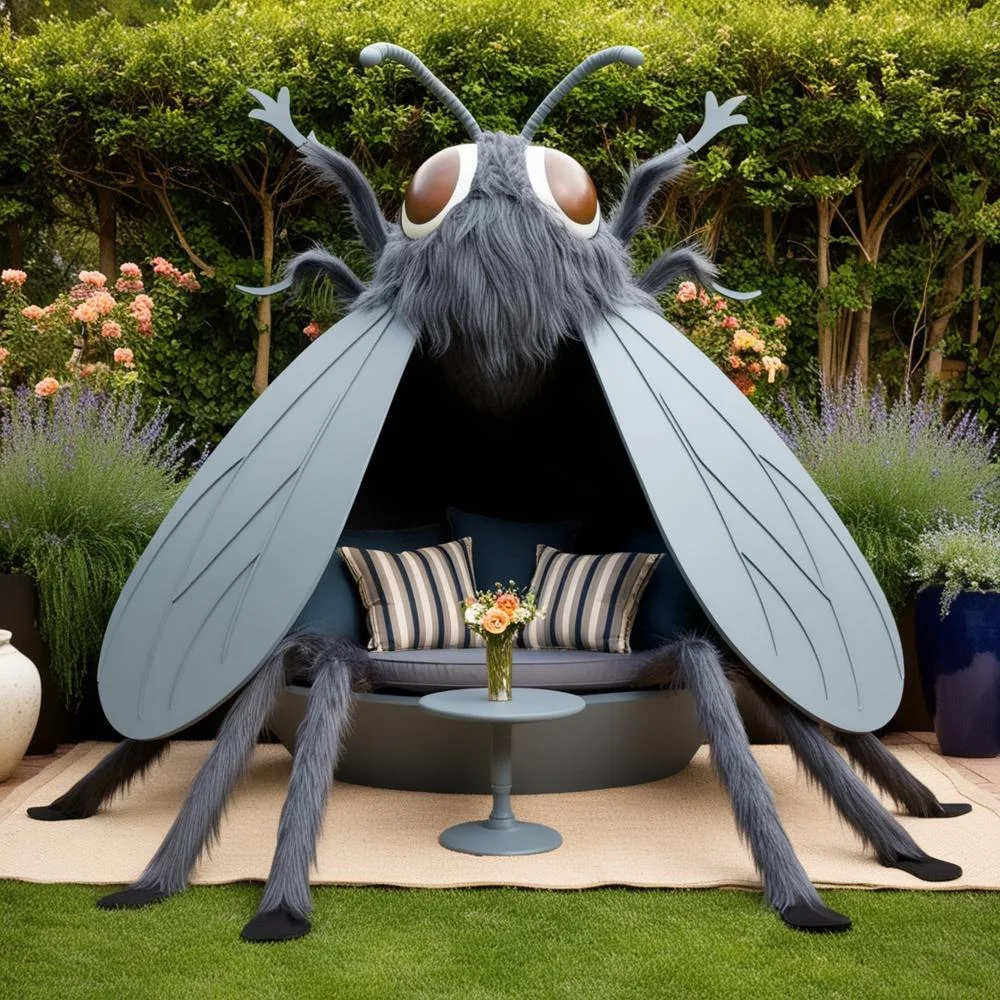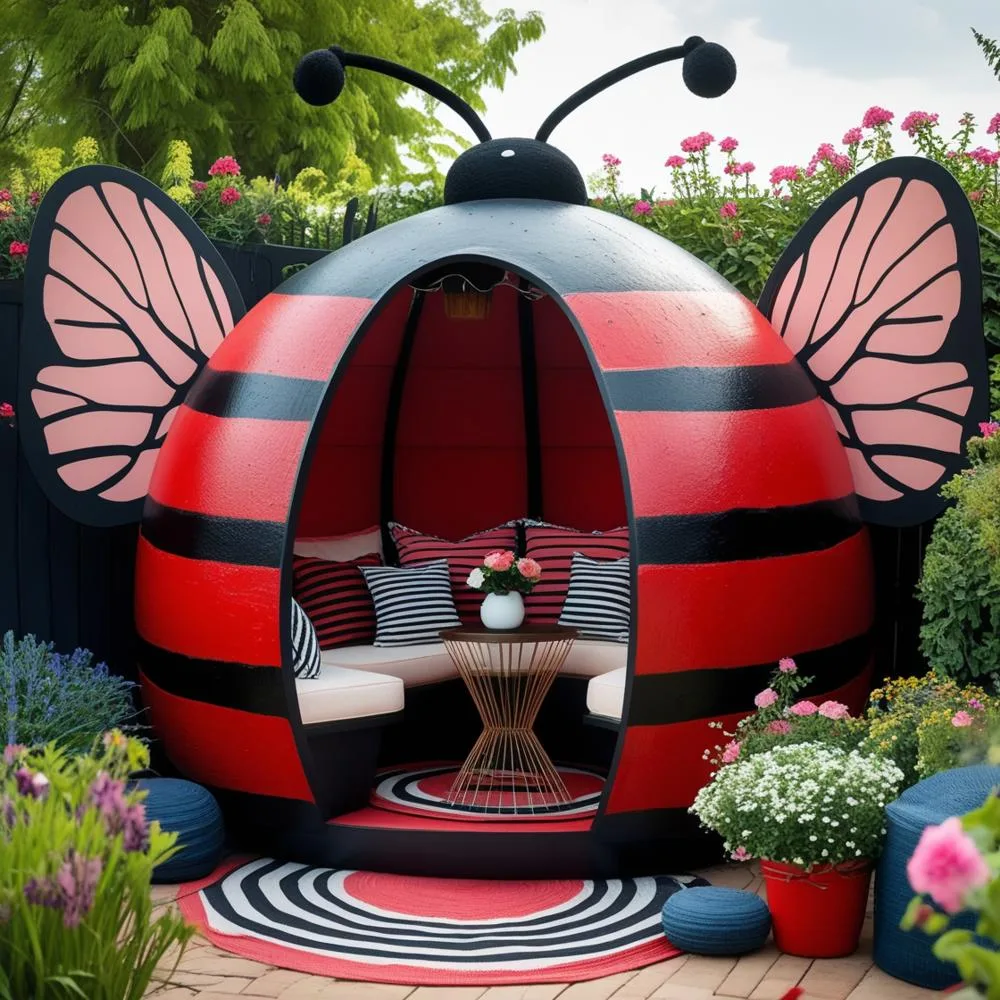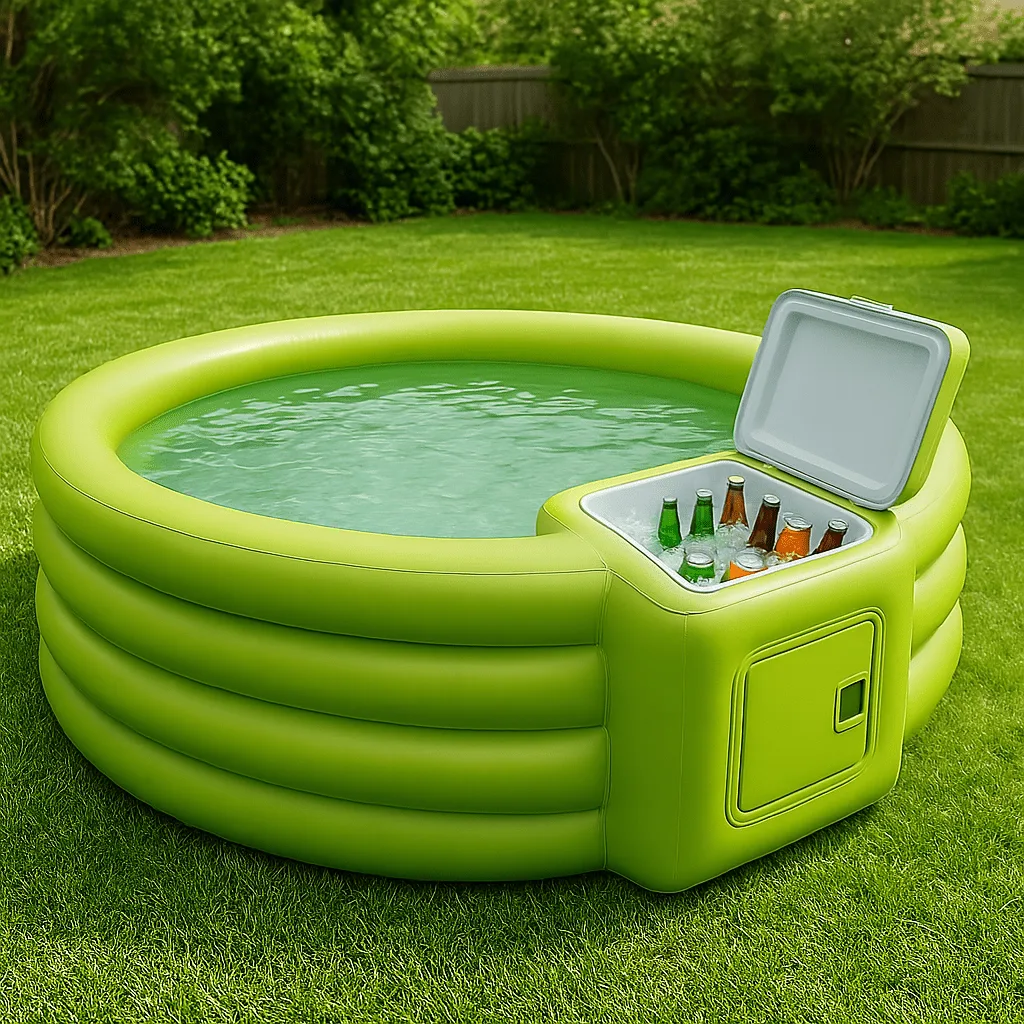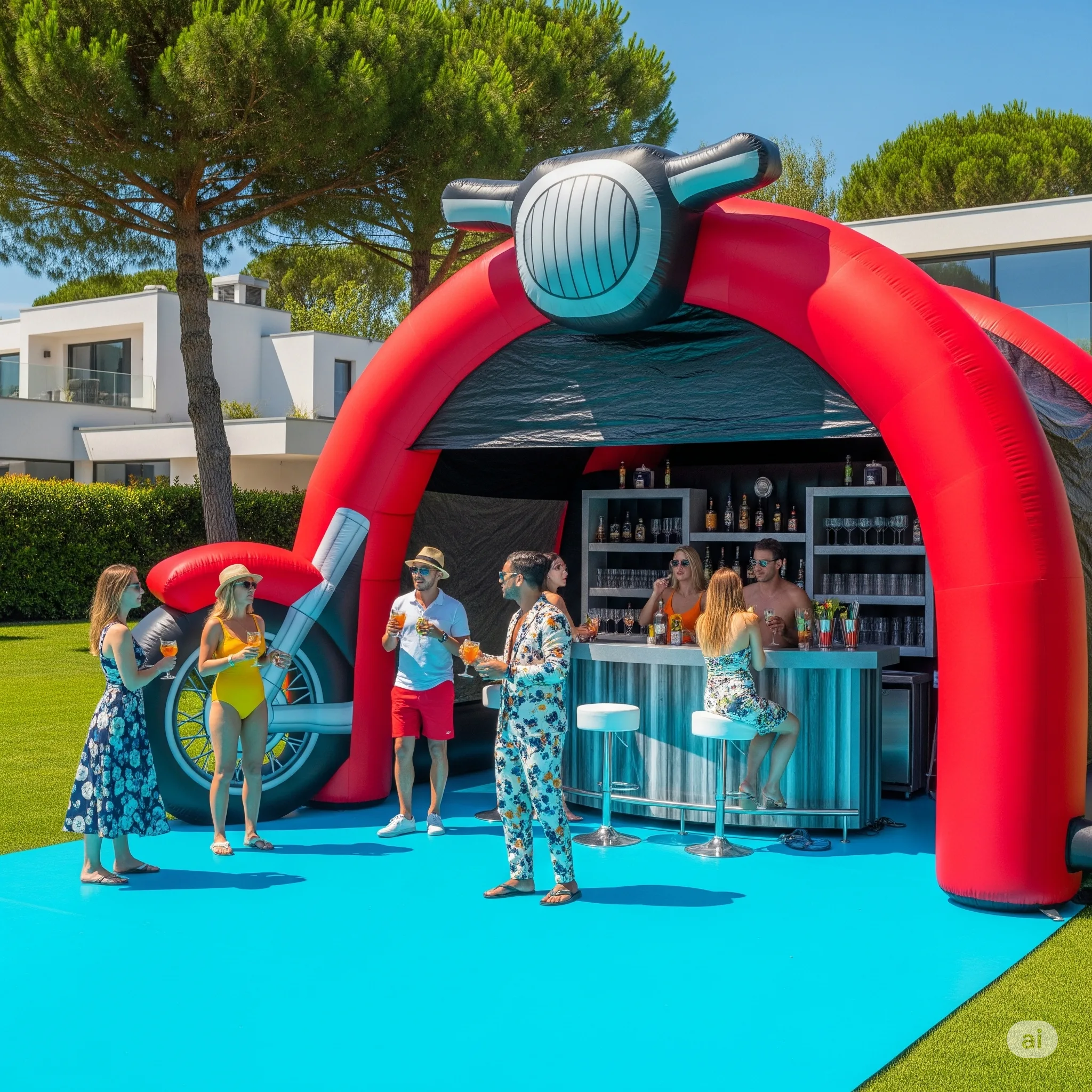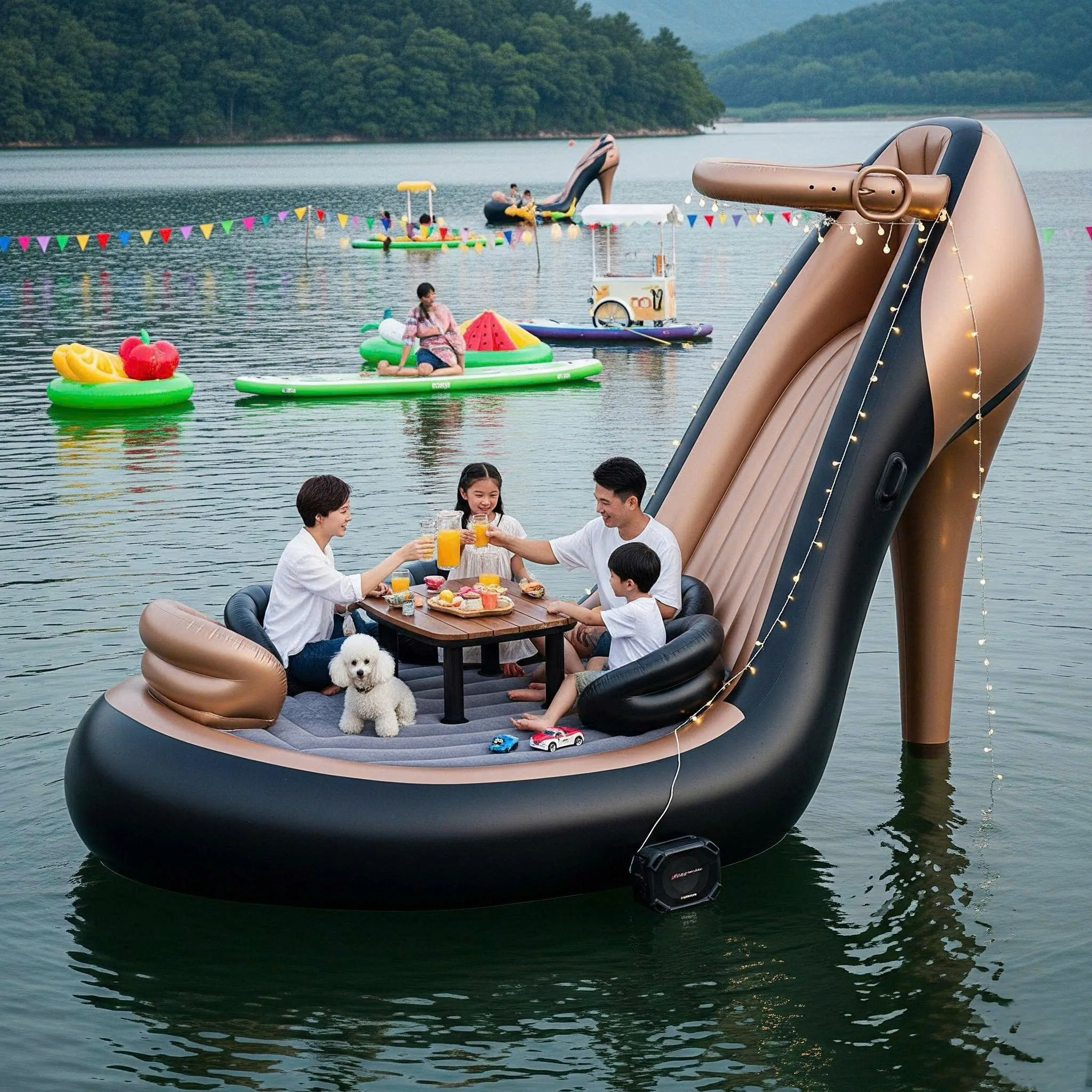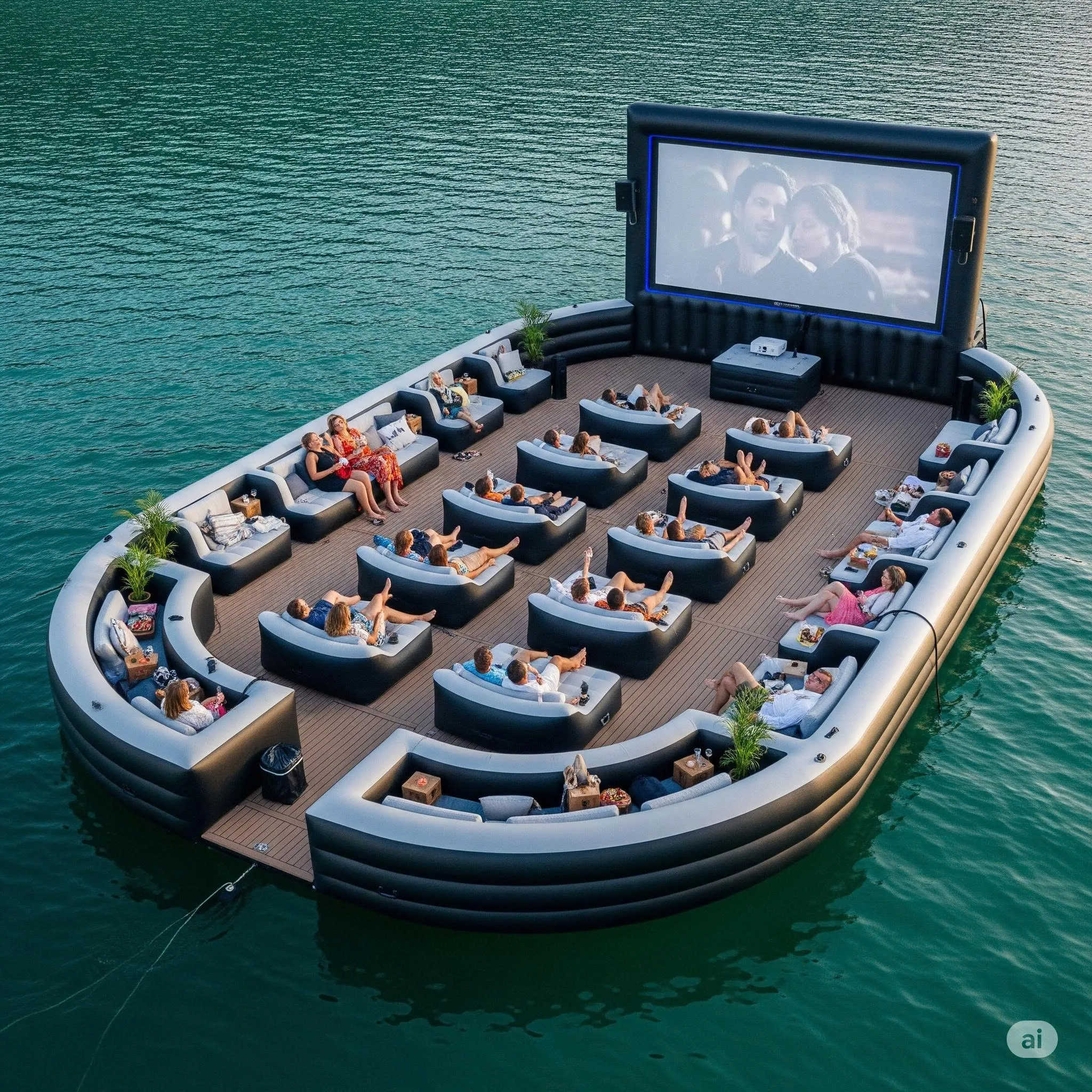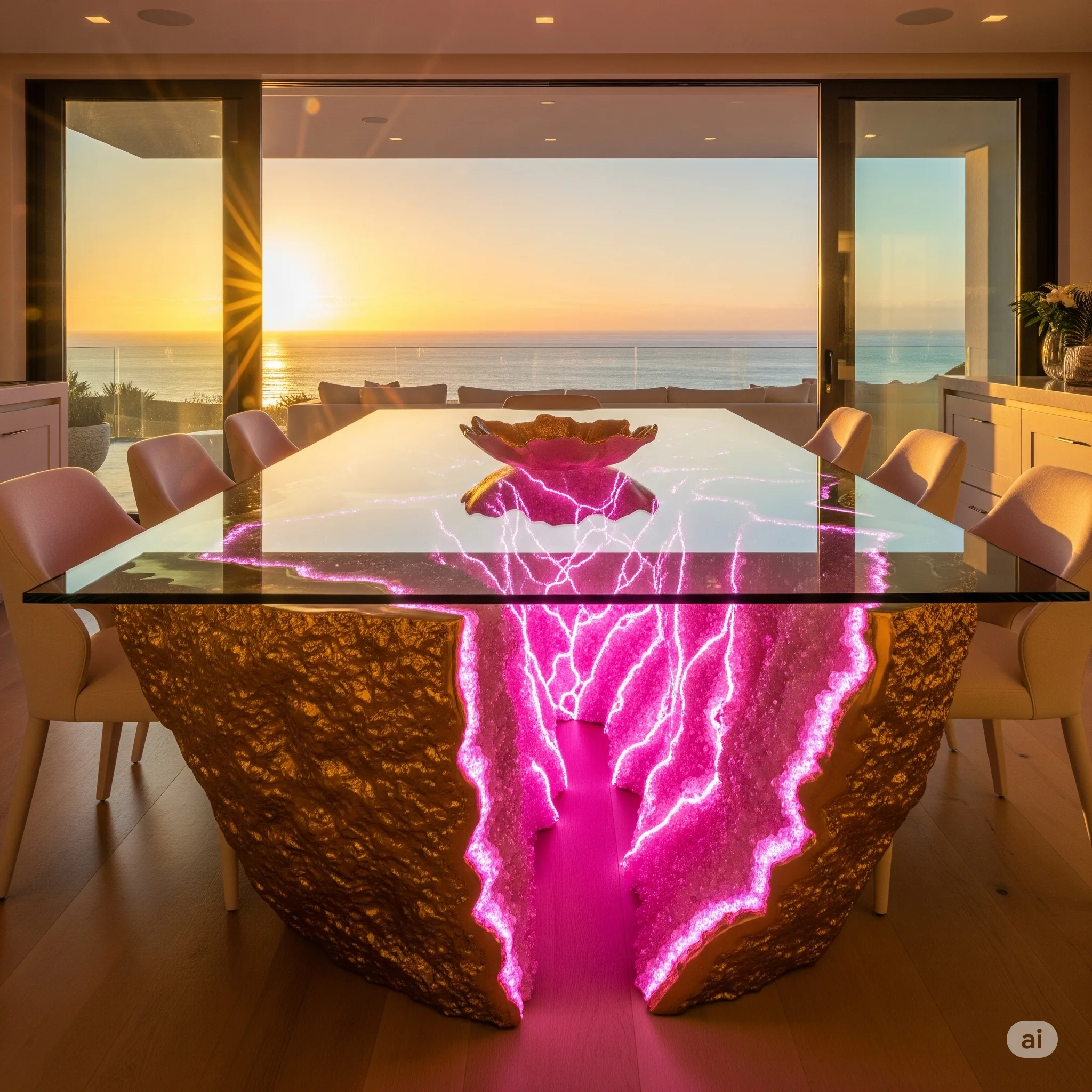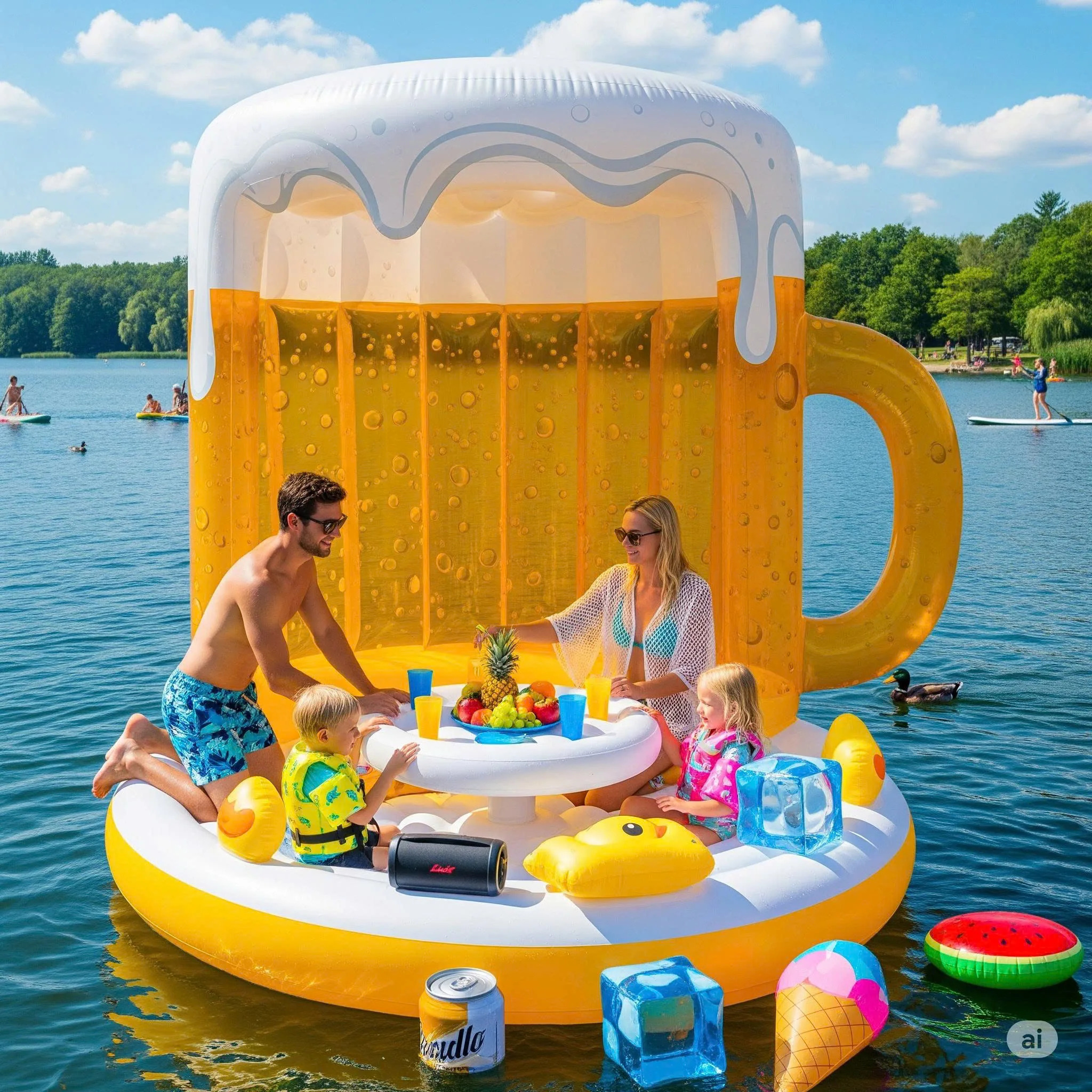Contents
Where Nature and Design Intertwine
In the ever-evolving world of garden and landscape design, there’s a growing trend of drawing inspiration directly from nature itself—not just in the plants chosen, but in the structures we place among them. Among the most captivating innovations in this field are Insect-Inspired Garden Seating Pods. These fascinating creations combine biomimicry, artistry, and comfort to deliver seating solutions that look as though they’ve crawled right out of a fairy tale and into your backyard.
Insect-inspired pods don’t just serve as places to rest—they act as sculptural focal points, conversational art pieces, and immersive environments that allow users to feel closer to nature. With forms modeled after beetles, butterflies, dragonflies, and even honeycomb hives, these seating pods represent a harmonious blend of functionality and organic design. Whether nestled within a lush garden, perched beside a pond, or placed on a sunny patio, they invite both contemplation and connection.
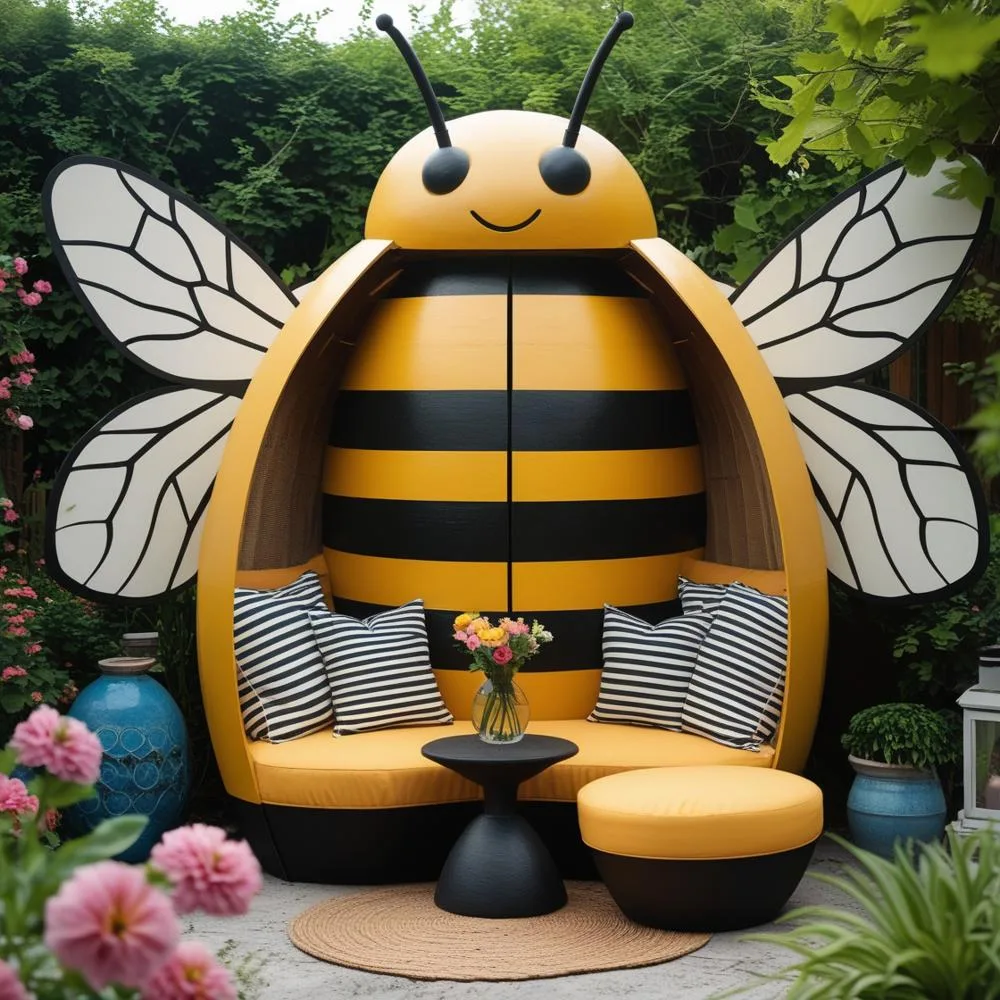
What Are Insect-Inspired Garden Seating Pods?
Insect-Inspired Garden Seating Pods are uniquely shaped outdoor furniture structures modeled on the shapes, patterns, and structures of insects. They often resemble cocoons, carapaces, or insect eyes, and provide shaded or enclosed spaces where one can relax, meditate, read, or socialize. These pods vary greatly in size, ranging from small one-person cocoons to large, pavilion-like structures that accommodate multiple people.
While the name might conjure images of bugs, the actual designs are often elegant, futuristic, or even whimsical. They celebrate the beauty and ingenuity of insects without being literal. Picture a pod that mimics the layered iridescence of a beetle’s shell, or a seating nook whose structure reflects the lattice of a dragonfly’s wing. These pods bring an otherworldly presence to any outdoor space.
Inspiration from the Insect World
Insects have long fascinated designers for their complex shapes, symmetrical patterns, and evolutionary efficiency. Their structures are lightweight yet strong, organic yet mathematically precise. Here’s how that translates into seating pod design:
Beetle-Inspired Pods
These often feature a domed or split-shell form, mimicking the protective carapace of beetles. The seats are often enclosed or semi-enclosed, offering privacy and protection from the sun and elements. The beetle’s iridescent exoskeleton inspires shimmering metallic finishes or deep, jewel-toned hues.
Cocoon-Inspired Seating
Drawing from the transformative shape of butterfly and moth cocoons, these pods typically use woven materials like rattan, wicker, or metal mesh. They create an intimate, nest-like feel. Their organic forms blend seamlessly into garden environments and offer a sense of retreat and enclosure.
Bee Hive and Honeycomb Pods
Inspired by the geometric perfection of honeycomb structures, these pods often utilize hexagonal frames or seating segments. Modular and stackable, they can be arranged in clusters, reflecting the collaborative nature of bee colonies.
Dragonfly or Butterfly Wing Designs
Some pods feature sprawling, curved canopies reminiscent of insect wings. These might be made of translucent materials that filter sunlight, echoing the delicate nature of a dragonfly’s wings while providing light shade.
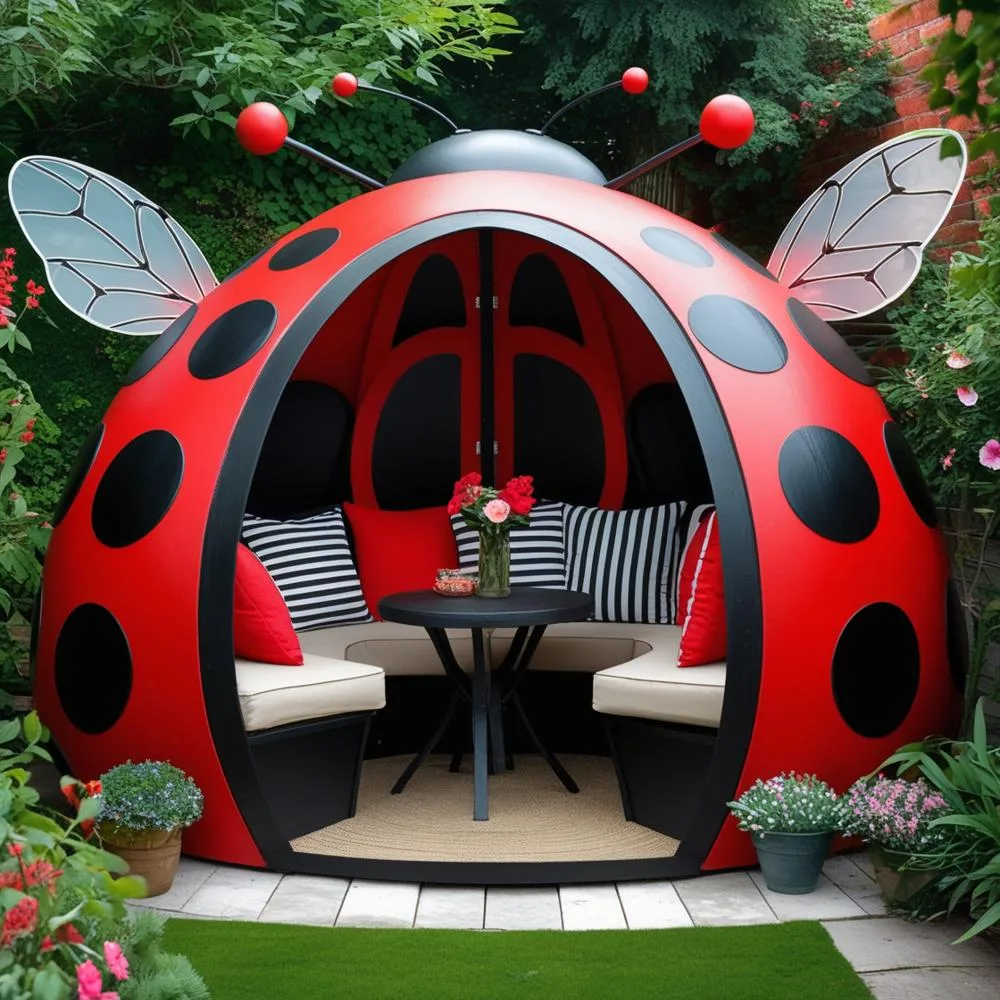
Ant or Termite Mound Concepts
For larger garden structures, designers may take cues from the complex tunnels and rounded forms of ant or termite mounds, creating multi-seating pods with organically branching layouts that mimic insect-built architecture.
Materials and Craftsmanship
The success of Insect-Inspired Garden Seating Pods lies in the skillful integration of natural aesthetics with durable, weather-resistant materials. These pods are designed not only to resemble nature, but to survive within it.
Popular Materials Include
Weatherproof wicker or synthetic rattan for cocoon-like enclosures
Powder-coated metal or aluminum for wing-inspired frames and hexagonal structures
Fiberglass and resin for sculpted beetle or carapace shapes
Recycled plastic or eco-composites for sustainable builds
Outdoor cushions with UV-resistant and water-repellent fabrics
The craftsmanship often involves a combination of hand-woven techniques and precision manufacturing. Custom designers may also incorporate lighting, speakers, or even heating elements for comfort year-round.
Functional Benefits Beyond Aesthetics
Though they are undeniably beautiful, Insect-Inspired Garden Seating Pods offer more than just looks. They bring tangible benefits to the garden and its users:
Comfort and Shade
Most pods are semi-enclosed, offering a cool, shaded place to rest on sunny days. Their curved shapes help protect against wind and can trap warmth during chilly mornings.
Privacy and Retreat
Whether used for solitary reading or quiet meditation, these pods provide a sense of sanctuary within a larger outdoor space. They are excellent additions to wellness gardens or retreat spaces.
Focal Points and Landscape Interest
Insect-inspired designs add visual drama and organic form to structured gardens. They serve as sculptural art pieces, drawing the eye and inviting interaction.
Family-Friendly Features
Many pods are large enough for children to crawl into and explore, making them playful and interactive. Some designers even create bug-themed versions explicitly for play gardens.
Eco-Integration
Certain designs use green roofing or allow climbing plants to weave through their frame, blending into the surrounding flora and encouraging pollinators.
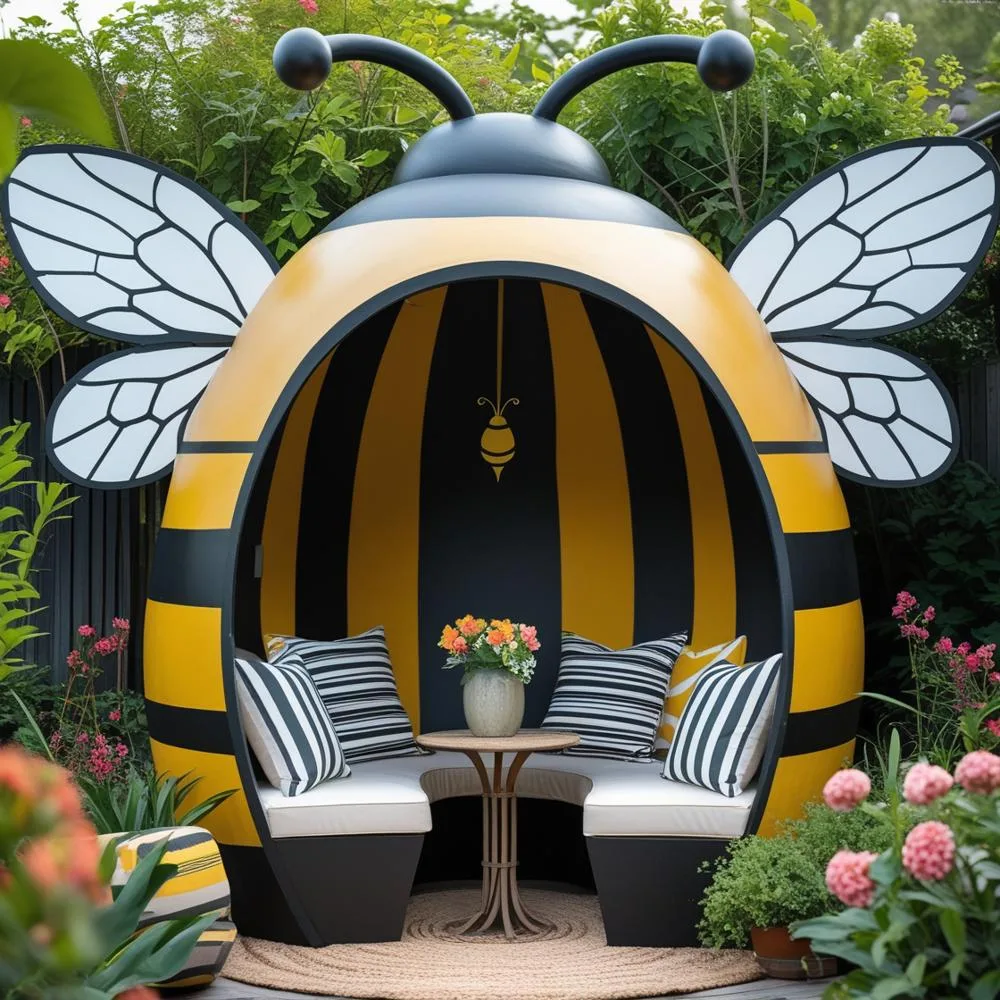
Popular Uses and Placement Ideas
Private Gardens and Yards
Placed beside a flower bed, among tall grasses, or beneath a tree, an insect-inspired pod becomes a personal oasis. Homeowners use them for reading nooks, morning tea, or evening relaxation.
Botanical Gardens and Arboretums
Larger pods act as semi-public seating where visitors can sit and take in the view. Their design reinforces the natural theme of these venues while providing comfort.
Hotel and Resort Landscapes
Luxury properties use these pods in spas, poolside areas, or within tropical gardens to provide unique lounging experiences that reflect a connection to nature.
Children’s Play Spaces
Some pods are scaled for younger users and designed with extra durability and safety in mind. Butterfly wings and bug-eye domes become whimsical mini-hideouts.
Outdoor Classrooms and Therapy Spaces
In gardens used for educational or therapeutic purposes, pods offer shaded quiet zones for focus or rest, and their insect designs subtly reinforce lessons about biodiversity.
Design Trends and Emerging Innovations
The world of Insect-Inspired Garden Seating Pods continues to evolve with exciting trends and technologies.
Biophilic Design
Designers are pushing toward stronger integration between pod and plant. New builds use living walls, moss-covered shells, or bamboo-like supports that allow the pods to become part of the living landscape.
Solar Lighting and Smart Features
Many modern pods are equipped with solar-powered lights that create glowing effects at night. Others include Bluetooth speakers, USB charging ports, or Wi-Fi boosters for digital nomads who want to work in the garden.
Mobility and Portability
Lightweight designs now allow some pods to be moved easily around a garden based on sunlight, shade, or seasonal changes in plant life.
Sustainable and Ethical Production
With environmental awareness on the rise, more companies are using recycled or sustainably sourced materials and eco-conscious manufacturing processes.
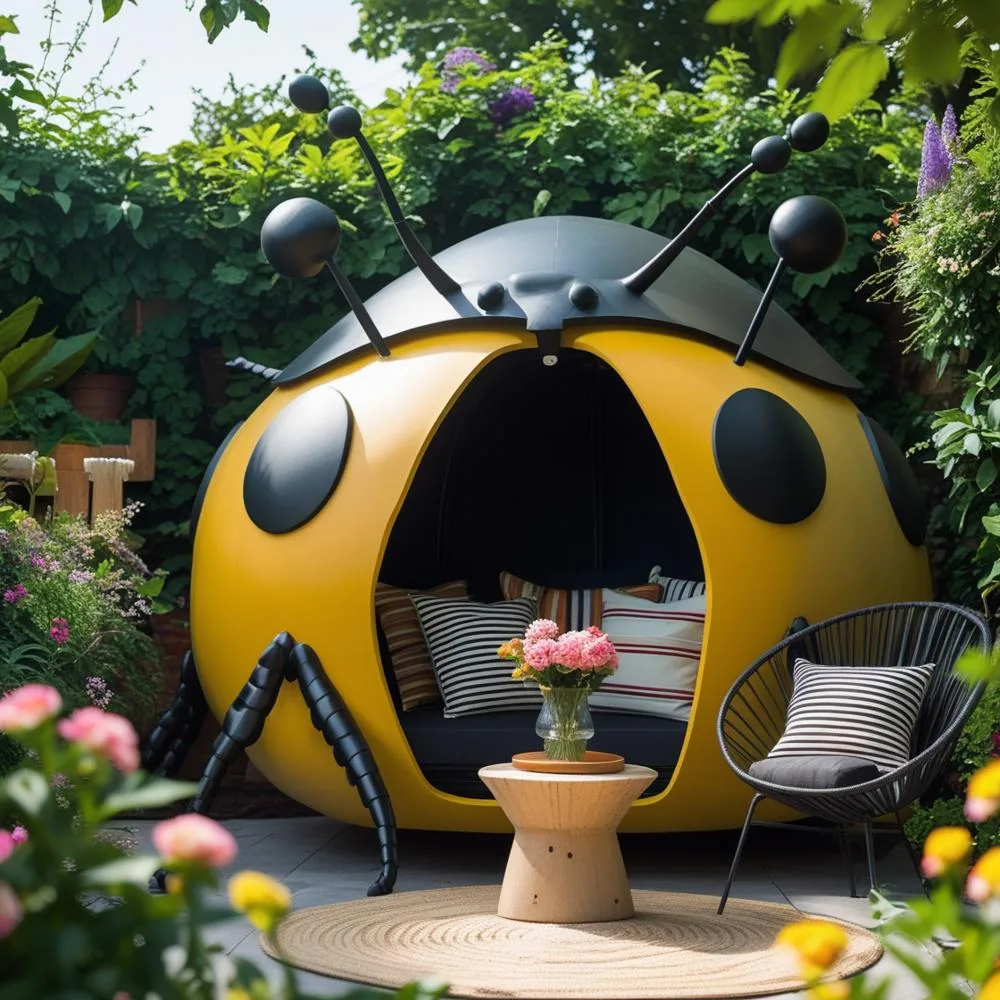
Customizable Interiors
Some high-end pods allow for removable cushions, climate-control fans, interior lighting strips, and even fold-out tables, transforming them into fully functional outdoor rooms.
Where to Buy or Commission Insect-Inspired Seating Pods
Luxury Outdoor Furniture Brands
High-end brands now produce beetle or cocoon-inspired pods as part of their designer garden furniture collections. Look for Italian, Dutch, or Scandinavian design houses for truly sculptural pieces.
Independent Designers and Artisans
Many artists and small studios specialize in nature-inspired outdoor furniture. Etsy, design fairs, and architectural showcases are great places to discover custom work.
Landscape Architecture Firms
For fully integrated garden experiences, architects may design custom pods specifically for your garden’s size, style, and theme.
Eco-Focused Brands
Look for companies that partner with conservation initiatives or donate a portion of their profits to insect biodiversity or pollinator programs.
Tips for Integrating Pods into Your Garden
Match the Theme
Choose a pod that echoes your garden’s dominant features. For example, a honeycomb pod fits well in a pollinator garden, while a cocoon pod suits a quiet Zen space.
Use Lighting Strategically
Add soft, ambient lighting inside or around the pod to make it usable at night and visually striking after dark.
Combine with Insect-Friendly Plants
Plant nearby flowers like lavender, milkweed, or echinacea to draw in butterflies, bees, and beneficial insects, enhancing the thematic effect.
Create a Pathway
Build a winding stone or gravel path to your pod to emphasize its destination appeal.
Add Soft Furnishings
Cushions, throws, and floor mats in earthy tones or nature prints will elevate comfort while maintaining the aesthetic harmony.
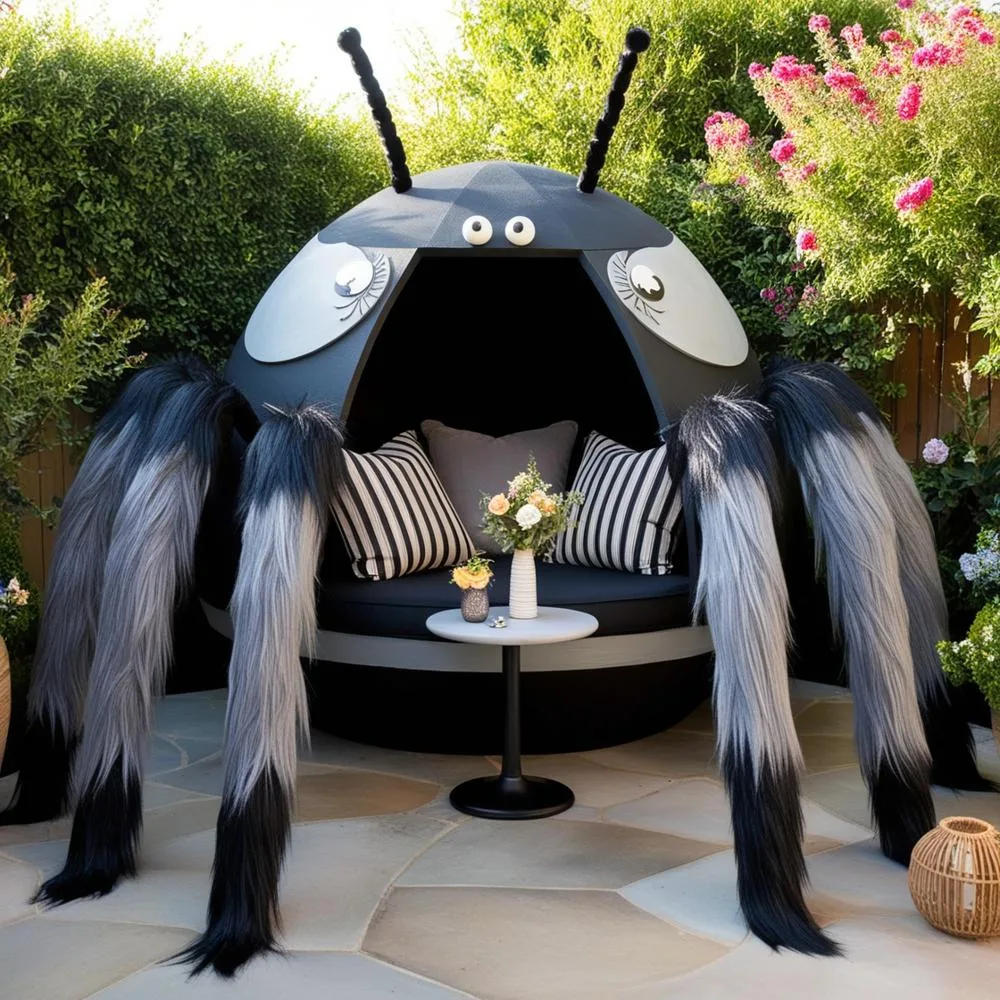
From the Bug World to the Backyard
Insect-Inspired Garden Seating Pods exemplify the idea that nature is the greatest designer. These structures draw on the beauty, ingenuity, and structure of insects to create spaces that are not only useful and comfortable, but artistically bold and emotionally uplifting.
Whether you’re aiming to transform your garden into a personal sanctuary, a magical retreat, or a whimsical conversation starter, insect-inspired pods bring a layer of enchantment and wonder that no ordinary patio chair can match. They offer shelter, style, and symbolism, reminding us that even the smallest creatures can inspire the biggest ideas.
With each pod resembling a beetle shell, cocoon, hive, or wing, these designs invite us to sit, reflect, and marvel at the overlooked genius of the insect kingdom. In a world moving fast, these natural oases encourage us to slow down—and perhaps see our surroundings through new, compound eyes.
